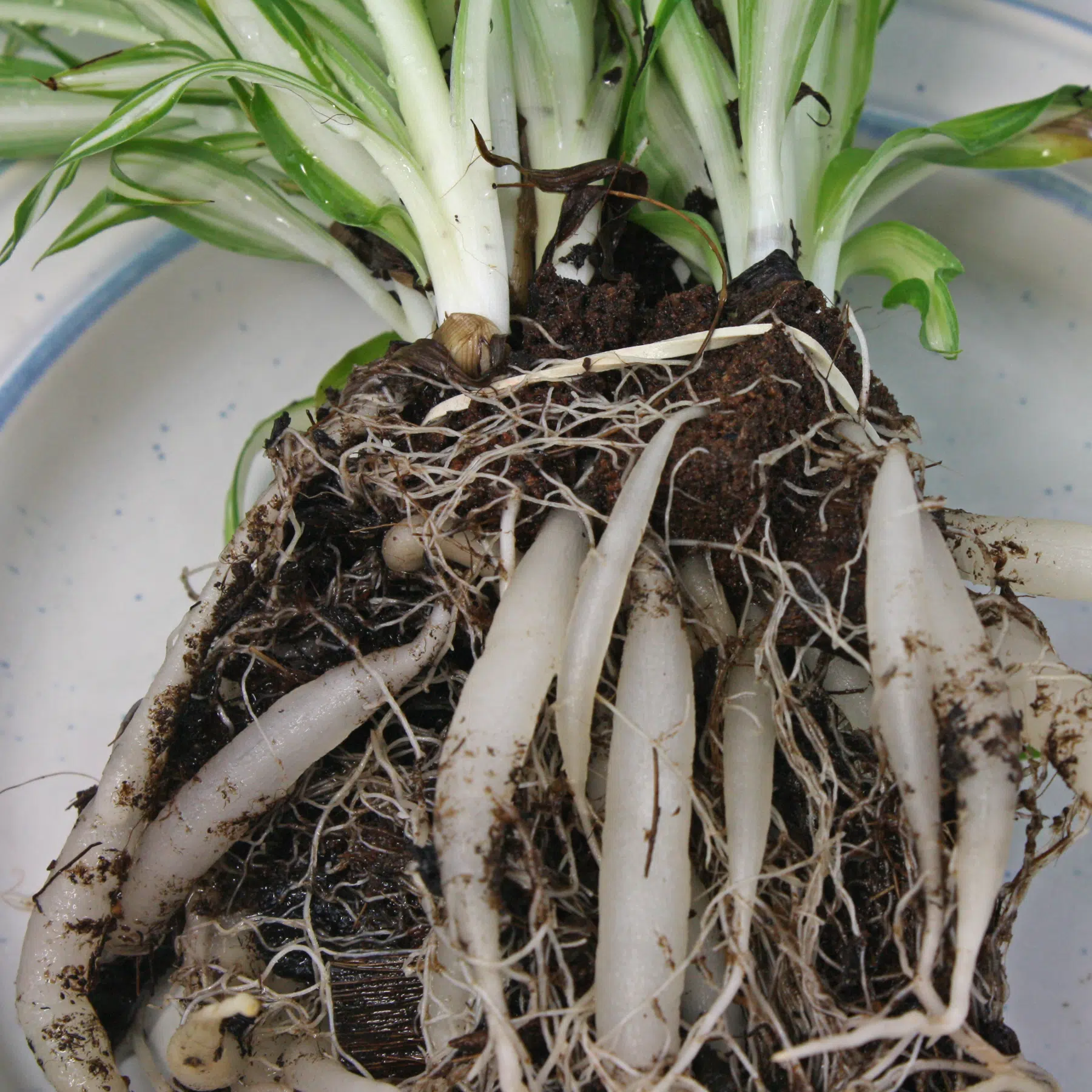Spider Plant, Spider Ivy, Ribbon Plant

Description
The Spider Plant (Chlorophytum comosum) is related to the agaves and yuccas. It is native to tropical and subtropical Africa. The leaves of the wild type are plain green. On its flower shoots not only flowers grow, there are also plantlets.
The most popular cultivar may be the Chlorophytum comosum “Variegatum” shown here, but other varieties are available. For example, “Bonnie” with wavy leaves.

Is the Spider Plant poisonous?
Chlorophytum comosum contains saponins in some parts but it is considered to be non-toxic. According to this source, it is said not to be suitable for human consumption or feeding to pets.

Care
Lighting & Temperature
Chlorophytum comosum tolerates sunny to shady locations and can handle hot summer sun. Newly purchased plants need to be acclimated slowly to direct sunlight.
The Spider Plant can spend the summer in the garden or on the balcony, again, it should be slowly accustomed to unfiltered sunlight in the spring.
According to its tropical and subtropical origin, it likes it warm all year round and does not want to be placed below 50 °F/10 °C for a long time in winter.

Soil
Mixes for houseplants, container plants, palms, herbs and vegetables are suitable. I use peat-free vegetable soil for most of my houseplants.

Watering & Feeding
The pot root ball is allowed to nearly dry out between waterings. Drying out occasionally does no harm, but can lead to brown leaf tips. The Spider Plant shows that the substrate is dry by its leaves, which then turn bright.
It can also cope with short-term waterlogging, but the soil should not be under water for weeks.
Liquid fertilizers can be given monthly from spring to fall. Fertilizer sticks, granules or pellets can be applied in spring and summer.
As most substrates are pre-fertilized, no further feeding is necessary during the first year after repotting.


